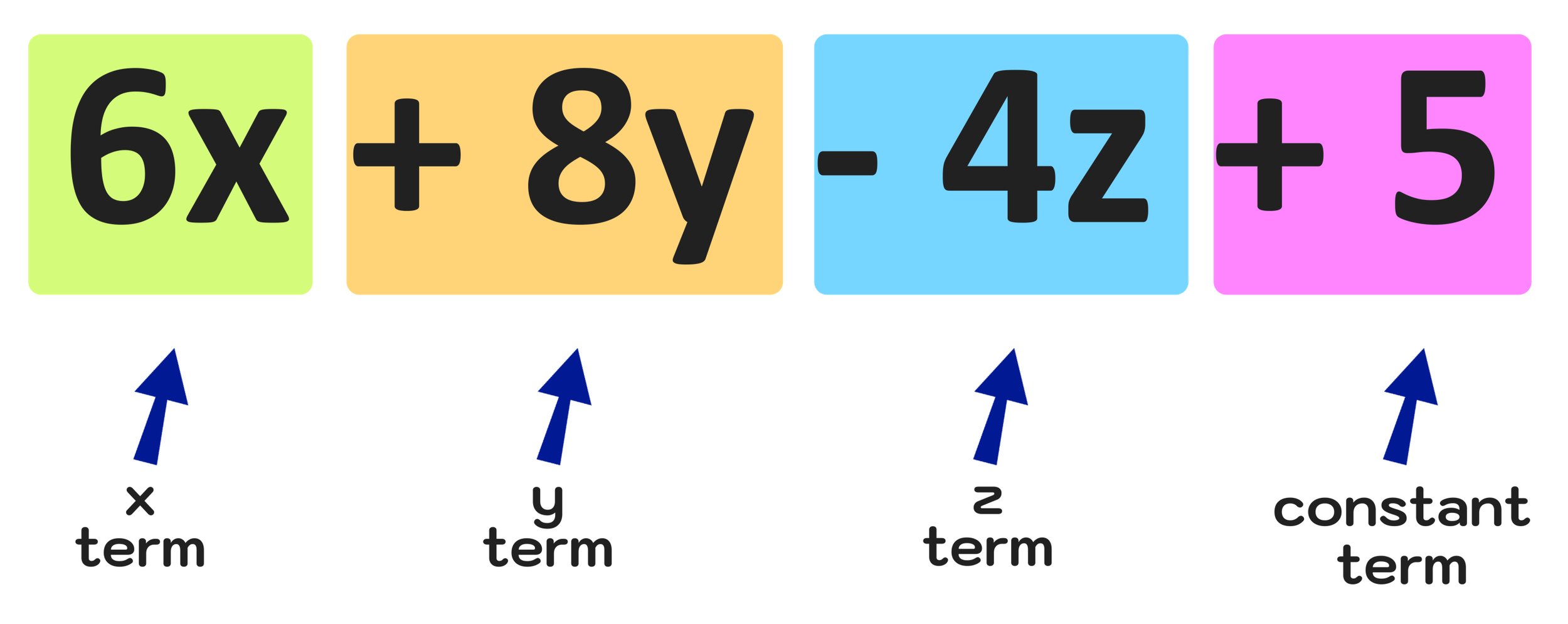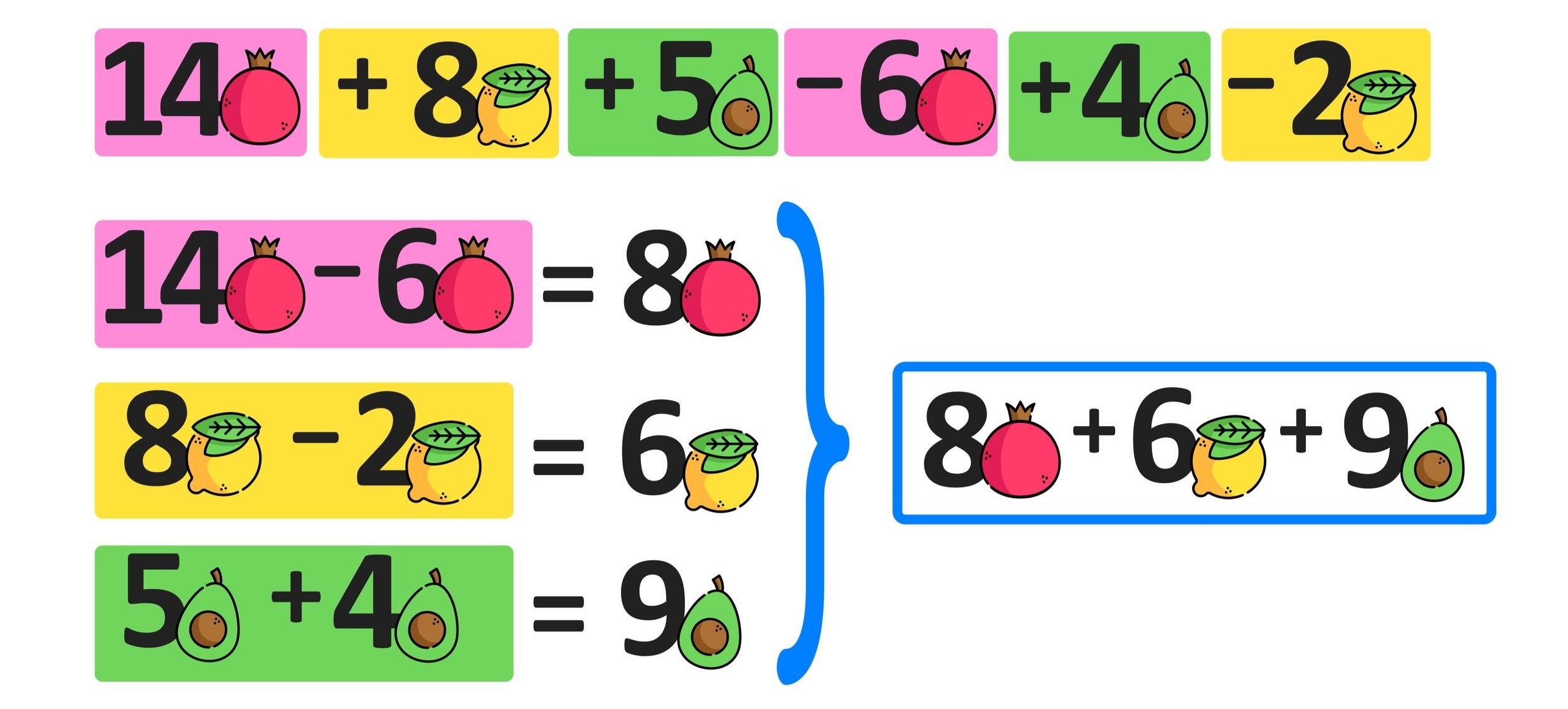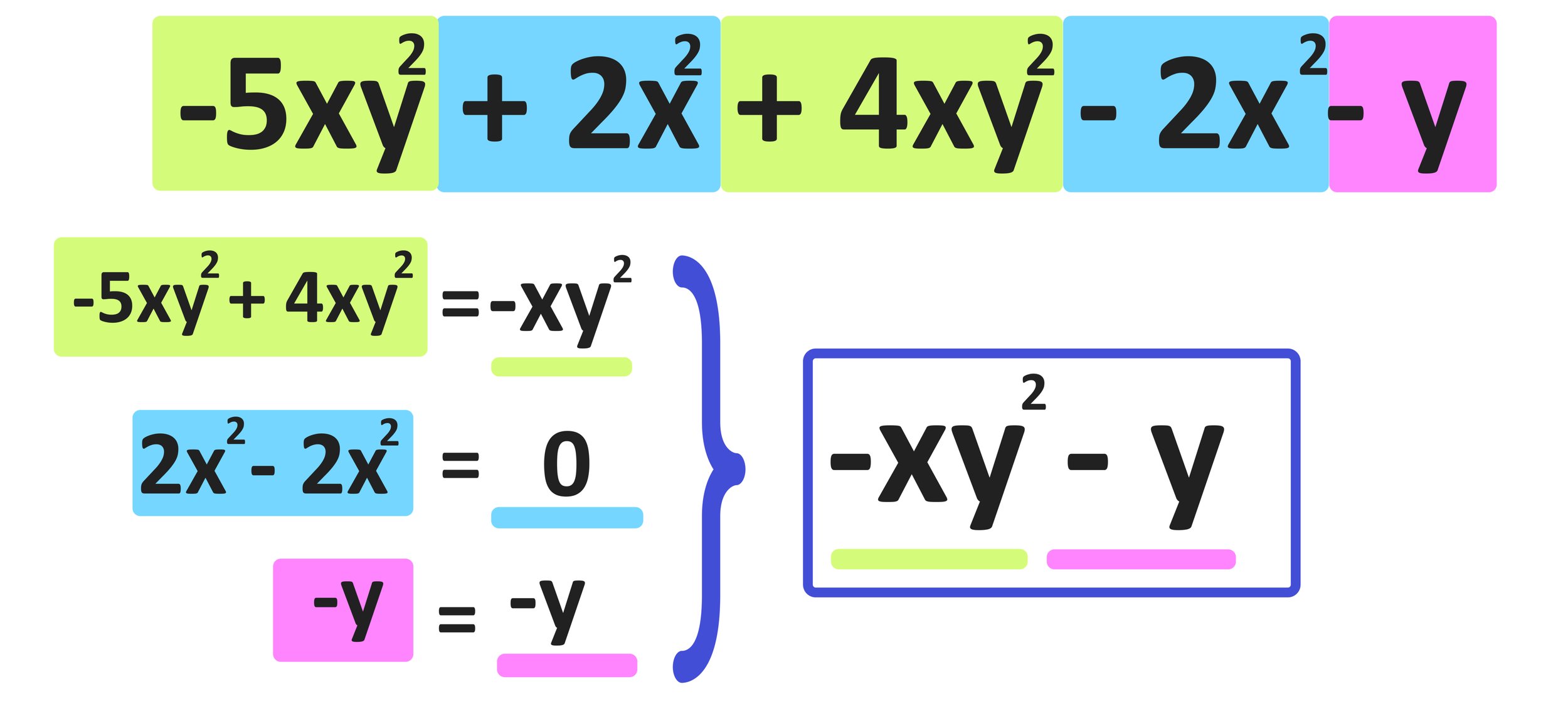Combining Like Terms Explained
How to Combine Like Terms Quickly and Easily (Worksheet Included)
Free Step-by-Step Guide: Combining Like Terms
Combining like terms is an important math skill that involves simplifying an expression by combining terms that have the same variables and/or exponents. You combine like terms when you want to make an expression simpler and easier to read and solve.
This free Step-by-Step Guide to Combining Like Terms will walk you through how to quickly and easily combine like terms and it includes examples and a free practice worksheet. This guide will cover the following topics:
Before we dive into how to combine like terms, lets do a quick review of some important math vocabulary related to combining like terms (this quick recap will help you to better understand the examples in this guide).
What are Terms in Math?
In math, a term is one single number or algebraic expression that is part of a larger expression or equation.
For example, the mathematical expression 6x + 8y - 4z + 5 has four terms:
6x
8y
-4z
5
What are Terms in Math?
Each of the first three terms consists of a coefficient (a number in front of a variable) and variable letter (x, y, or z in this example). The fourth term is called a constant because it is a single number without a variable.
It is also important to note that a term can have multiple variables as well. For example, 6xy or 10xyz could be terms (more on this later on).
What are terms in math? The important thing to understand right now is that each individual part of an expression (separated by mathematical operation signs like + or -) is a term and, when terms are like, they can be combined to create a simpler result that is easier to work with.
Combining Like Terms Definition
Now that you understand what are terms in math, you are ready to learn how to combine like terms.
Combining Like Terms Definition: Combining like terms is the act of simplifying an algebraic expression by either adding or subtracting terms that have the same variables and/or exponents.
Before we look at a simple numerical example, lets take a look at the fruit expression in Figure 01 below.
Figure 01: The fruit expression has three terms: pomegranates, avocados, and lemons.
The fruit expression has three terms: pomegranates, avocados, and lemons.
You can read this expression verbally as: 14 pomegranates plus 8 lemons plus 5 avocados minus 6 pomegranates plus 4 avocados minus 2 lemons.
By looking at this expression, it should be clear that you can make it simpler by combining like fruits. We can easily do this by color coding the terms as follows:
Highlight pomegranates in pink
Highlight lemons in yellow
Highlight avocados in green
Now, you can make the following combinations of like fruits:
Pomegranates: 14 + - 6 = 8 pomegranates*
Lemons: 8 + -2 = 6 lemons
Avocados: 5 + 4 = 9 avocados
*Note that you simplify an expression like 8+-2 as 8-2.
So, after combining like terms, the new expression would be: 8 pomegranates plus 6 lemons plus 9 avocados
Figure 02 below illustrates how we just combined like terms (fruit) to simplify a complicated expression by using color-coding.
Figure 02: Combine Like Terms Using Color Coding
How to Combine Like Terms
The fruit expression is a good first introduction to combining like terms. Obviously, in math, you won’t be dealing with fruit, but variables like x, y, and z instead.
For example, consider the expression 3x + 2y + 5x -3z + 7y + z
To combine like terms, we can color coordinate the x-terms, y-terms, and z-terms and then combine them together group by group as follows:
x-terms: 3x + 5x = 8x
y-terms: 2y + 7y = 9y
z-terms: -3z + z = -2z
After combining like terms, the new expression would be: 8x +9y - 2z.
This example is illustrated in Figure 03 below.
Figure 03: How to combine like terms.
Now, lets work through 3 more step-by-step examples of combining like terms.
Combining Like Terms Examples
Example #1: Combine Like Terms 5x + 9 + 2x
For this first example, you have to combine like terms 5x + 9 + 2x
This expression has 2 terms. To combine like terms, we can color coordinate the x-terms and constant terms, and then combine them together group by group as follows:
x-terms: 5x + 2x = 7x
constant terms: 9
After combining like terms, the new expression would be: 7x + 9
This example is illustrated in Figure 04 below.
Figure 04: Combine Like terms 5x + 9 + 2x
Example #2: Combine Like Terms: 7q + 5r -4 +3s -3q +5r - 3
This expression has 4 terms. To combine like terms, we can color coordinate the q-terms, r-terms, s-terms, and constant terms, and then combine them together group by group as follows:
q-terms: 7q + (-3q) = 4q
r-terms: 5r + 5r=10r
s-terms: 3s
constant terms: -4 + (-3) = -7
Notice that there is only one s term, so you can not combine it with another like term.
After combining like terms, the new expression would be: 4q+10r+3s-7
This example is illustrated in Figure 05 below.
Figure 05: How to Combine Like Terms
Example #3: Combine Like Terms: -5xy^2 +2x^2 + 4xy^2 - 2x^2 - y
This expression has 3 terms. To combine like terms, we can color coordinate the xy^2-terms, x^2 terms, and y-terms, and then combine them together group by group as follows:
xy^2-terms: -5xy^2 + 4xy^2 = -1xy^2
x^2-terms: 2x^2 + (-2x^2) = 0 (they cancel each other out)
y-terms: -y
After combining like terms, the new expression would be: -xy^2 - y
This example is illustrated in Figure 06 below.
Figure 06: Combining Like Terms
Free Combining Like Terms Worksheet
Combining Like Terms Worksheet Preview
Are you looking for more practice with combining like terms?
Click the link below to download our free Combining Like Terms worksheet as a pdf file (full answer key included). We highly recommend using colored pencils or highlighters to color code the terms in each example.
→ Download your free Combining Like Terms Worksheet PDF File (with Answer Key)
Keep Learning:
Search Tags: combining like terms, combine like terms, combining like terms worksheet, how to combine like terms, combine like terms worksheet, combine line terms 5x + 9 + 2x, combine like terms definition, combining like terms examples, combining like terms worksheet pdf



















